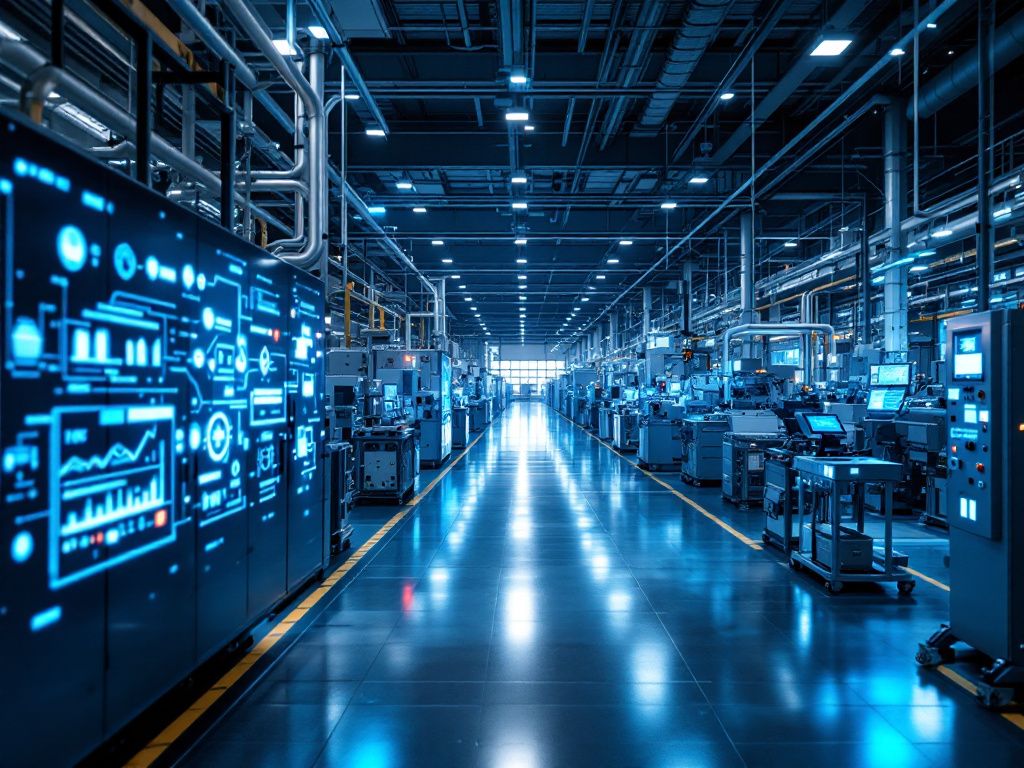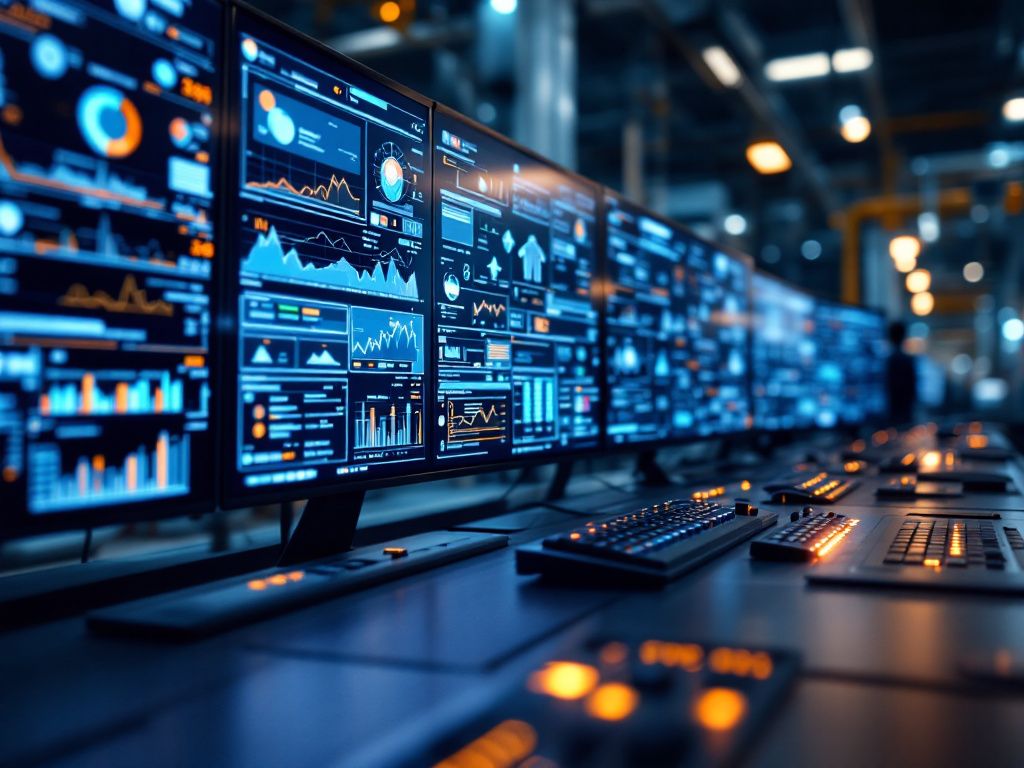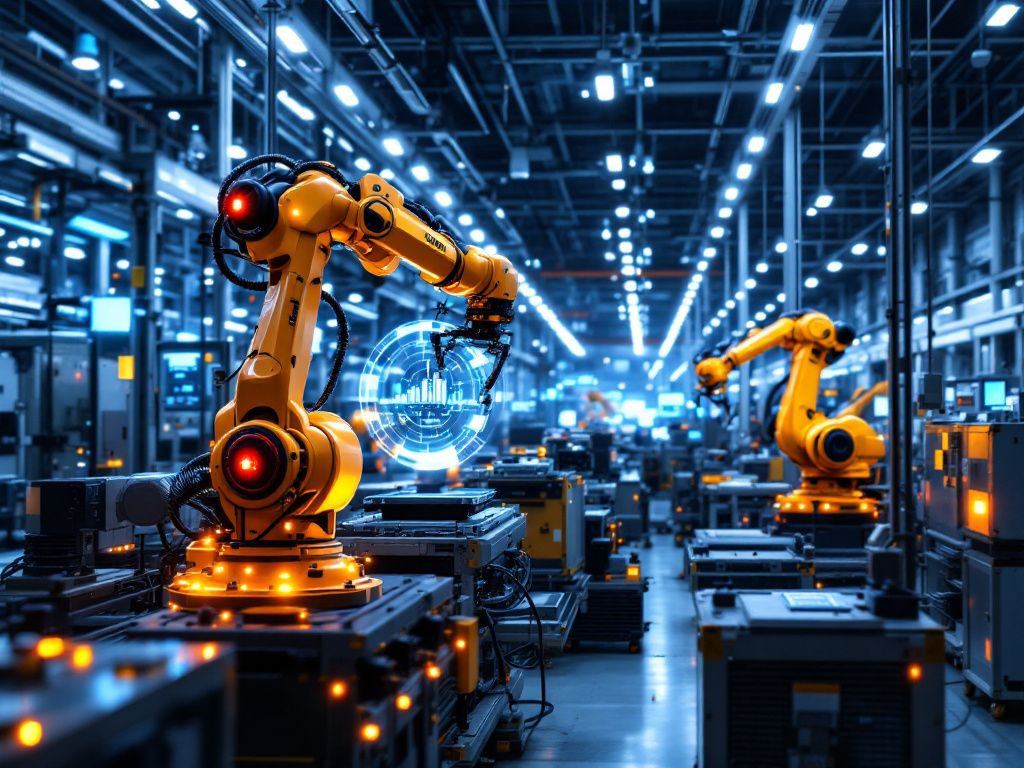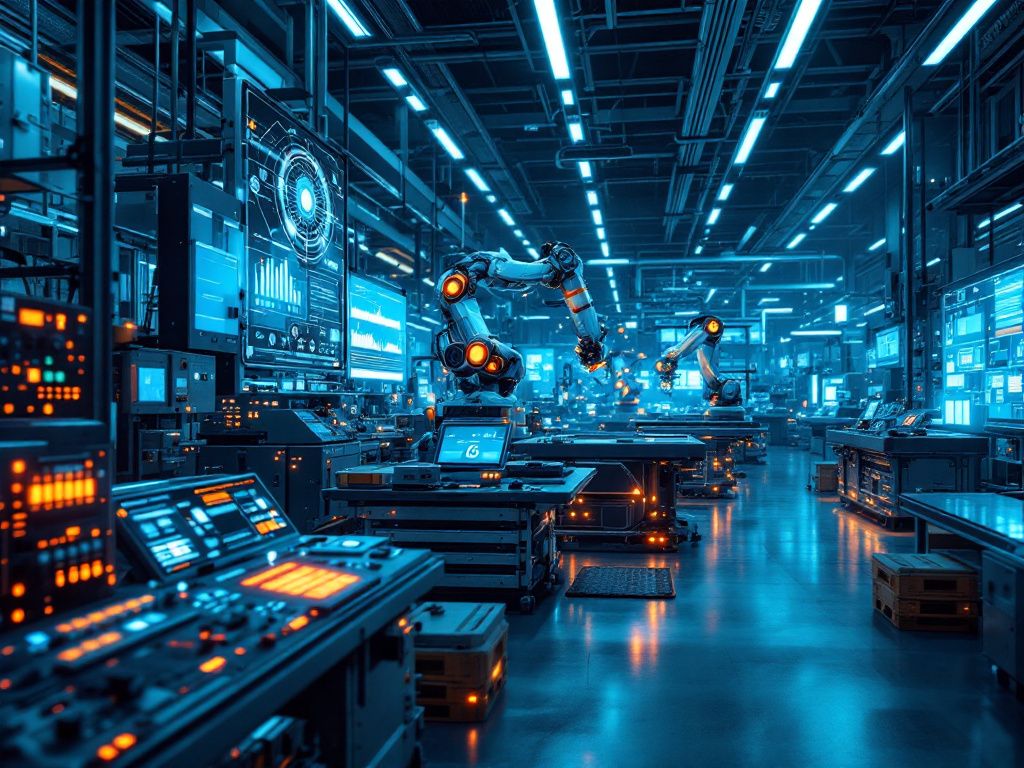Industrial IoT represents a revolutionary shift in manufacturing and industrial operations, connecting smart sensors, devices, and analytics platforms to optimize processes. This technology enables unprecedented machine-to-machine communication, predictive maintenance, and real-time monitoring across sectors. Understanding IIoT’s transformative potential is crucial as industries navigate digital transformation and seek competitive advantages in an increasingly connected world.
To remember
Industrial IoT can reduce equipment maintenance costs by up to 30% through predictive analytics and real-time monitoring, while increasing overall operational efficiency by 25% across manufacturing facilities.
What is industrial IoT and how it works
The Industrial Internet of Things (IIoT) represents a revolutionary approach to industrial operations, where smart sensors, connected devices, and advanced data analytics converge to create intelligent manufacturing ecosystems. This technology extends beyond traditional automation by enabling real-time communication between machines, systems, and operators across entire industrial networks.
Core Components of Industrial IoT
IIoT systems operate through several interconnected elements that work seamlessly together. Smart sensors serve as the foundation, continuously monitoring equipment performance, environmental conditions, and production metrics. These devices collect vast amounts of data from machinery, measuring parameters such as temperature, vibration, pressure, and energy consumption. Connected devices then transmit this information through secure networks to centralized data processing platforms.
The data analytics component transforms raw information into actionable insights using machine learning algorithms and artificial intelligence. This process enables predictive maintenance, quality control, and operational optimization across industrial facilities. Edge computing capabilities allow for real-time decision-making at the device level, reducing latency and improving response times.
Machine-to-Machine Communication Excellence
IIoT enhances machine-to-machine communication by establishing standardized protocols that enable seamless data exchange between different systems and manufacturers. This connectivity allows equipment to automatically adjust operations based on real-time conditions, coordinate with other machines, and trigger maintenance alerts before failures occur.
Leading technology companies including Oracle, Microsoft, and Cisco IoT have developed comprehensive platforms that support industrial applications ranging from manufacturing automation to energy management. These solutions enable industries to monitor production lines, optimize supply chains, and implement predictive maintenance strategies that significantly reduce downtime and operational costs while improving overall system reliability.

Benefits and challenges of implementing IIoT
The implementation of Industrial Internet of Things technology presents a compelling value proposition for businesses, yet organizations must navigate significant obstacles to realize its full potential. Understanding both the advantages and hurdles is crucial for successful digital transformation initiatives.
Transformative Benefits of IIoT Implementation
The benefits of Industrial IoT extend far beyond simple automation, delivering measurable improvements across multiple operational dimensions. Increased operational efficiency stands as the primary advantage, with connected sensors and real-time analytics enabling companies to optimize production processes and reduce waste. Manufacturing facilities report productivity gains of up to 25% through IIoT-enabled process optimization.
Enhanced worker safety represents another critical benefit, as IoT devices can monitor environmental conditions, detect hazardous situations, and trigger automatic safety protocols. In oil and gas operations, connected sensors continuously monitor pipeline integrity and gas levels, preventing potential accidents before they occur. Additionally, reduced human error emerges through automated quality control systems that maintain consistent product standards while minimizing manual intervention.
Implementation Challenges and Strategic Considerations
Despite these advantages, organizations face substantial challenges when adopting IIoT technologies. Security risks pose the most significant concern, as interconnected devices create multiple entry points for cyber threats. Industrial systems handling sensitive operational data require robust cybersecurity frameworks to protect against potential breaches that could disrupt entire production lines.
The need for interoperability presents another complex challenge, as legacy systems must integrate seamlessly with new IoT infrastructure. Many manufacturers struggle with connecting decades-old machinery to modern networks, requiring significant investment in compatibility solutions. Furthermore, managing large volumes of data demands sophisticated analytics platforms and skilled personnel capable of extracting actionable insights from continuous data streams generated by thousands of connected devices across industrial facilities.

Top industrial IoT applications across sectors
The industrial IoT landscape showcases transformative applications across diverse sectors, each leveraging connected systems to address specific operational challenges. These implementations demonstrate how IIoT technologies are reshaping traditional industrial processes through data-driven insights and automated decision-making capabilities.
Manufacturing Excellence Through Connected Systems
In manufacturing environments, industrial IoT applications focus primarily on predictive maintenance and quality control optimization. Fanuc, a leading robotics manufacturer, has integrated sensors throughout their production lines to monitor equipment performance in real-time. Their systems collect vibration data, temperature readings, and operational metrics to predict potential failures before they occur, reducing unplanned downtime by up to 30%. Similarly, Airbus has implemented comprehensive IIoT solutions in their “factory of the future” initiative, where connected sensors monitor assembly processes and workers use smart glasses to access real-time instructions, significantly improving production accuracy and worker safety.
Energy Management and Resource Optimization
Energy management represents another critical application area where industrial IoT delivers substantial cost reductions. Smart grid implementations enable utilities to monitor power distribution networks continuously, automatically adjusting supply based on demand patterns. Industrial facilities utilize connected sensors to track energy consumption across different systems, identifying inefficiencies in heating, ventilation, and air conditioning operations. These applications typically result in energy cost reductions of 15-25% while improving overall system reliability.
Agriculture and Resource Monitoring
In agriculture, industrial IoT applications revolutionize crop management through precision farming techniques. Sensors deployed across farmland collect soil moisture data, nutrient levels, and weather conditions, enabling farmers to optimize irrigation schedules and fertilizer application. Livestock monitoring systems use implanted microchips to track animal health, location, and breeding information, improving herd management efficiency and reducing operational costs by approximately 20%.

The future of industrial IoT: Trends and innovations
The industrial Internet of Things is poised for unprecedented growth, driven by emerging technologies that will fundamentally reshape how industries operate. As we advance through 2025 and beyond, several key innovations are accelerating the transformation of industrial environments into intelligent, self-optimizing ecosystems.
5G Technology: Enabling Ultra-Low Latency Operations
The rollout of 5G networks represents a critical milestone for IIoT evolution. With latency reduced to as low as 1 millisecond, 5G enables real-time communication between industrial devices that was previously impossible. This ultra-low latency is particularly transformative for applications requiring instant response times, such as robotic automation in manufacturing lines and remote control of heavy machinery in mining operations. The enhanced bandwidth of 5G also supports massive device connectivity, allowing factories to deploy thousands of sensors simultaneously without network congestion.
Manufacturing facilities are already experiencing significant improvements in operational efficiency through 5G-enabled IIoT systems. Real-time data processing capabilities allow for immediate adjustments to production parameters, reducing waste and optimizing resource utilization. The technology also enables advanced augmented reality applications for maintenance technicians, providing instant access to equipment data and repair instructions.
Artificial Intelligence Integration: Smart Decision-Making at Scale
The convergence of AI and IIoT is creating self-learning industrial systems capable of autonomous decision-making. Machine learning algorithms analyze vast datasets from connected sensors to identify patterns and anomalies that human operators might miss. These AI-powered systems can predict equipment failures weeks in advance, automatically adjust production schedules based on demand forecasts, and optimize energy consumption across entire facilities.
Edge computing further enhances AI capabilities by processing data locally on industrial devices, reducing dependence on cloud connectivity and enabling faster response times. This distributed intelligence approach allows factories to maintain operations even during network disruptions while ensuring sensitive data remains secure within the facility.
Economic Impact and Industry Transformation
Market analysts project the global IIoT market will reach $516.6 billion by 2028, reflecting the technology’s growing adoption across industries. The integration of 5G and AI is expected to unlock an additional $15 trillion in global GDP by 2030, as industries achieve new levels of efficiency and innovation through connected operations.

The essentials to remember about Industrial IoT transformation
Industrial IoT stands as a cornerstone of modern industrial transformation, offering unprecedented opportunities for efficiency gains and operational excellence. As AI integration and 5G networks mature, IIoT systems will become increasingly sophisticated, enabling autonomous decision-making and ultra-responsive manufacturing processes. The convergence of these technologies promises to reshape entire industries, creating new business models and driving substantial economic growth. Organizations that embrace IIoT today position themselves advantageously for tomorrow’s competitive landscape, where data-driven insights and connected operations will define market leadership.